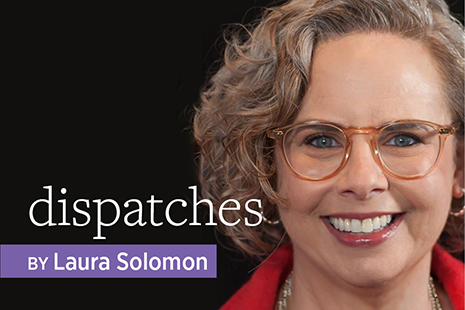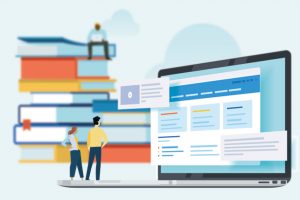
A lot of my job as a front-end web developer comes down to education. Sure, I spend a lot of time designing websites and writing code. Much of that work wouldn’t happen, though, if I didn’t pave the way with information. This is a little-known truth for most web designers: Educating the client is often one of the first—and most important—steps of the design process. I’ve found some library clients express desire for design elements that aren’t in their best interests, thinking something looks “cool” even though it doesn’t necessarily serve library patrons.
Whether or not a library wants a specific element on its site may be irrelevant; the web design and user experience fields are now based on the science of usability, not subjective judgments.
Back in the early days of the web, a fair amount of design work happened in a vacuum, lacking real guidelines and data. Fortunately, the medium has matured, and rules can now be applied objectively. Not everyone knows this, however.
I’ve heard all of the following comments from libraries recently:
- “Nothing should be more than three clicks from the homepage.” (No data supports this theory.)
- “Carousels are awesome!” (These rotating images can be attractive but may load either too quickly or too slowly for some users.)
- “We know what our users think and how they use our website.” (Statements like this are almost always based on staff anecdotes alone.)
- “We need graphics to jazz up the site.” (Some graphics hamper usability and ADA compliance.)
Why do these myths persist in libraries? Perhaps because so many of us grew up with the web, we were initiated in the very early days, when it was a veritable Wild West. Not everyone realizes that those days are long gone and there are real sheriffs in town.
Another reason? Some truths are hard. The fact that carousels turn off users doesn’t square with the love affair many libraries have with them. Users often don’t need or even like graphics, which some think takes much of the fun out of web work. Mythology persists, even in an industry devoted to the dissemination of information, because it can be hard to give up what’s comfortable.
Yet another factor contributing to these myths’ endurance: Library people spend a lot of time looking at the websites of other libraries. Just because one library does something doesn’t make it right. That library may be operating under the same outdated or myth-based assumptions you are. If you want to know what really works, look at websites in industries that live or die by whether people buy their services or products online or rely heavily on online donors. Those companies and organizations depend on the science of usability and often have invested significant funds to make sure users have a frictionless experience.
Take a look at metrics to determine why users are coming to your site. Chances are, you’ll be unpleasantly surprised. In general, most people go to a library’s website for access to their account, to search the catalog, to get the library’s phone number and address, and to see program information. Anything else is pure frosting.
As information professionals, we should seek studies and evidence on user experience and web design rather than rely on our own preferences or anecdotal evidence.
My hope is that by the time I retire, whoever comes after me will have to do a lot less myth-busting in libraries. In the meantime, let’s all be information professionals: Let’s put aside our outdated views and our own convenience to create better websites for users.
Adapted from “Thinking Differently about Library Websites: Beyond Your Preconceptions,” Library Technology Reports vol. 58, no. 3 (Apr. 2022).


